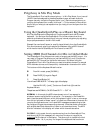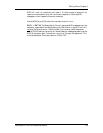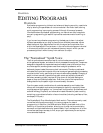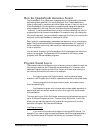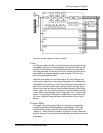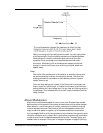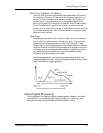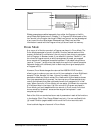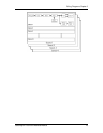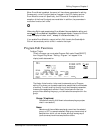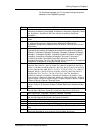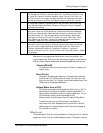
Editing Programs: Chapter 6
QuadraSynth Plus Piano Reference Manual 76
LFO (Low Frequency Oscillator)
The pitch, filter, and amp modules each have a dedicated LFO module
for modulation. The term LFO stands for low frequency oscillator, and
comes from how modulation was created in the early synth days (an
oscillator set to a low frequency could modulate some aspect of the
sound; routing the LFO to the pitch, for example, would create vibrato).
The LFO creates a cyclic (periodic) modulation; this amount can be
constant and/or varied with a variety of modulation sources (mod wheel
is one of the most popular). Each LFO has a waveform shape and speed,
along with other controls.
Envelopes
Envelope generators provide a modulation signal that varies over time,
from the time you strike the key until after you let go. There are three
independent envelope generators (for pitch, filter, and amp) in each
Program Sound. An envelope generator has different effects on different
modules. Example: The Amp Envelope creates level changes. Amplitude
that decays over time creates percussive effects (plucked strings, drums,
etc.). Amplitude that increases over time gives the effect of brass,
woodwind, and some bowed instruments.
Each envelope generator has the standard attack, decay, sustain, and
release parameters found on most synthesizers, along with delay, sustain
decay, and different triggering options.
About Signal Processing
The QuadraSynth Plus features a signal processing section based on the Alesis
QuadraVerb 2. It is a complete digital signal processing unit with four input
buses, simultaneous multiple effects, and flexible signal routing.



